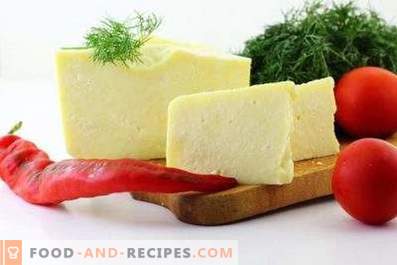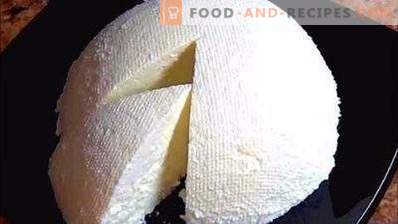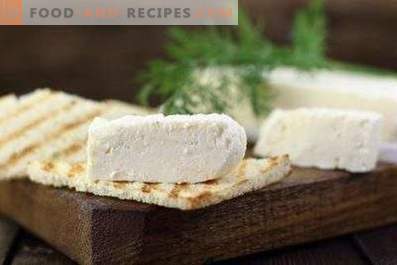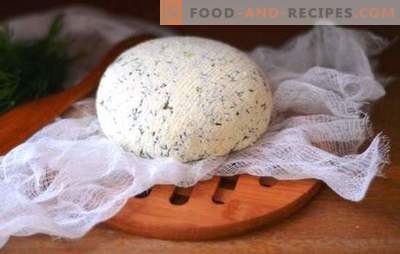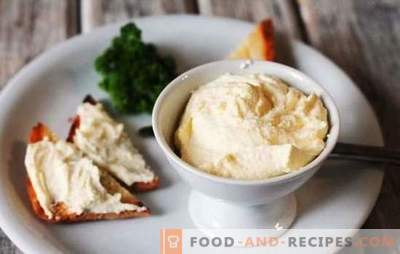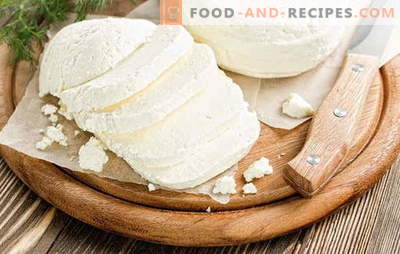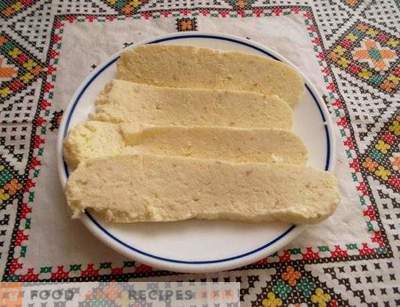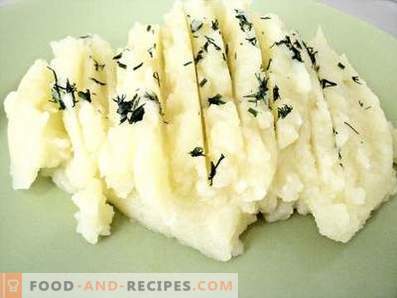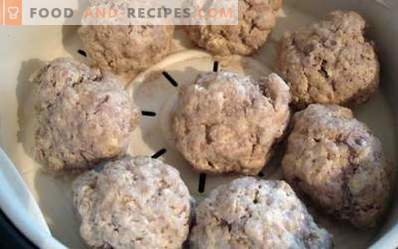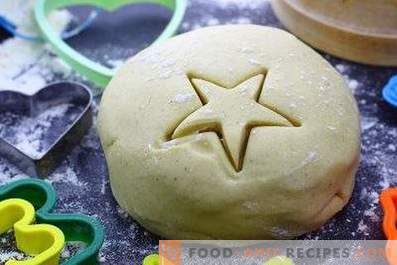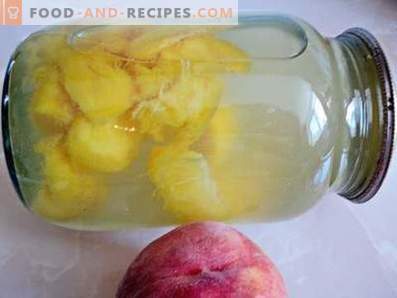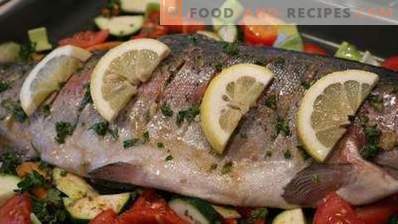
On the counters of stores you can find different varieties and types of cheeses.
Most of them are brought from abroad - from Switzerland, Holland, France or Italy.
Although due to the impact of sanctions and Russian cheeses are not in the minority.
But the price of good cheese is very “bite”.
And who will guarantee that there are no preservatives, thickeners and flavors in the composition of the shop cheeses?
People knew about cheeses a few centuries ago, when it was not possible to massively produce this product. Each family knew the recipe for making cheese, because making cheese with your own hands is not at all difficult. You can make cheese from store-bought, pasteurized, cow, goat, and even soy milk. The essence of cooking is either to boil milk with coagulant enzymes or to melt dairy products. There are a lot of recipes for homemade cheese. How to make cheese at home from milk - later in the article.
Cooking homemade cheese from milk: cooking features
No recipe for cheese can not do without milk, so the choice of this ingredient should be approached thoroughly. If the recipe is not spelled out how much milk should be fat, it is better to use homemade, farm. In the case when it is not possible to purchase farm milk, it can be replaced with store milk with a maximum percentage of fat content and a minimum shelf life.
In addition to milk, cottage cheese is also a part of many homemade cheeses. And with this product you need to be careful - real cottage cheese is rarely found in grocery stores, there is mainly curd mass or curd product for sale. From cheese mass real cheese will not work. Therefore, it is better to buy cottage cheese from farmers or produce at home by yourself. Only in this case, you can be sure of the quality of the cheese produced.
Do not expect homemade cheese to be as hard as shop cheeses. Homemade cheeses are much softer and softer. But if you wish, you can make the cheese more hard, because the hardness of this product depends on the pressure of the press. Accordingly, if you need hard cheese, then the press should be as heavy as possible. Choosing non-fatty foods you need to be prepared for the fact that whey will stand out a lot and the cheese will be relatively small. The greater the fat content of the cheese, the more oily and tender it is, which undoubtedly has a positive effect on the taste of the product.
As for hard cheeses, it is better that after cooking such cheese lay for a while - “ripe”. The taste will be brighter and more saturated. However, it must be borne in mind that cheeses weighing from a half a kilogram ripen well. Therefore, to make homemade hard cheese tastier, do not feel sorry for the ingredients and it is better to wait a few days after its preparation.
As for devices for making homemade cheeses, everything is not so terrible. The form for cheese, in its absence, can be easily replaced by an ordinary colander, a sieve or a fine mesh, which comes complete with a fryer. And as a press, you can use a can filled with water.
In the process of making cheese, whey is released. Many people just pour it, but the serum can be used in the preparation of some dishes. Thin fishnet pancakes are easily obtained from the dough for whey. Some people use this product when cooking okroshka.
How to make cheese at home from milk: prepare hard cheese
Hard cheeses are made by boiling dairy products with clotting enzymes. In the manufacturing process, whey is released, and the more it will be separated, respectively, the harder the cheese will turn out. Hard cheese must be kept under the press, then it will turn out more dense. Consider in detail the most popular recipes for making hard cheeses from milk at home:
1. Adygei cheese
This recipe is the easiest to prepare, requires little financial cost. The output is the softest cheese without preservatives, flavor enhancers and flavors.
Ingredients: Pasteurized milk (farmer milk can be, the fatter milk is better) - 3 l, kefir (preferably farmer or home) - 1 l, salt - 1.5-2 tsp. (more is possible, less is possible - you should only focus on your own taste) Cooking process:
1) The specified amount of yogurt must be poured into a deep pan and put on a slow fire. It is better if kefir is not fat free, but as fat as possible. Cook over kefir over low heat until the curd is separated from the whey and float.
2) The next step is to separate the curd from the whey. Serum can not be poured! It is useful further in the cooking process. It must be left at room temperature for souring for two days.
3) In a deep pan you need to pour the specified amount of milk and bring it to a boil. Then it is necessary to reduce the heat and pour in the same whey that has turned sour for 2 days. Mix well and cook on low heat until cheese rises.
4) Next, you need to drain the cheese, separate it from the liquid. Add salt to cheese, mix. After that, the resulting mass must be put in gauze and hung over the container or above the sink. This must be done to the remaining liquid glass.
5) After 30 minutes, get the cheese from the gauze, put in a clean dish and place under the press. The water that is separated from the cheese must be drained. Under the press, the cheese should stay at least 3-4 hours in the refrigerator.
2. Hard homemade cheese without eggs
This recipe for making cheese, like the previous one, is ideal for vegetarians, whose lifestyle implies the exclusion of eggs and animal enzymes from the diet. This recipe, like the first, is very simple.
Ingredients: Milk (similarly, as in the previous recipe, it is better to take milk fatter) - 1 liter, butter - 100 g, cottage cheese (preferably farm or homemade) - 1 kg, salt - 1-2 tsp, baking soda - 0.5 tsp, turmeric - 1/4 tsp, black ground pepper - 1/4 tsp, asafoetida - 1 pinch (seasonings are indicated in the recommended amount, you can add, reduce the amount, focusing on their own taste sensations).
Cooking process:
1) Milk must be poured into a deep pan, put on a high heat, bring to a boil. Add cottage cheese to boiling milk in the indicated amount, bring to boil again. Immediately after boiling the stove must be turned off. 2) The contents of the pan must be drained through cheesecloth. The liquid that separates during straining must be drained. Then we must continue to work with the mass, which remained in the gauze. You can hang gauze for 10 minutes to allow the liquid to drain, or simply squeeze the workpiece well into gauze with your hands.
3) Butter must be melted in a pan. Then add the resulting curd mass to the pan, mix well, break the lumps. It is necessary to fry a couple of minutes. Stir, add salt, soda and seasoning. The result should be a mass of viscous consistency.
4) Hot cheese must be put into a mold and cooled in a few hours. The form is better to use silicone, since the cheese from its walls moves better. After the cheese has cooled, you can eat it.
3. Mozzarella at home
If you need to learn how to make Mozzarella cheese at home from milk - you are right at the address. There are 2 options for making this cheese at home. One of them is using rennet (an enzyme of animal origin), and the second is from dairy products with vinegar. The most successful of these two options is undoubtedly the first. But vegetarians such cheese can not be eaten, as it contains rennet. Pepsin (an animal enzyme) is listed in this recipe, you can buy it at the pharmacy.
Ingredients: Milk (fat, at least 6%) - 2 liters, water - 1.5 liters, lemon juice and salt - 2 tbsp each. each, pepsin - 1/4 tsp. or at the tip of a knife, but if it turned out a little more, you should not be afraid - this enzyme is safe for the human body.
Cooking process:
1) In half a glass of water (preferably warm or at room temperature) add pepsin.
2) Pour milk into a deep pan, put on medium heat. Heat the milk to 70 degrees. Then diluted pepsin and lemon juice is added.
3) Then the process is very fast - the serum will begin to separate immediately. Wait for the boil is not necessary. Immediately after complete separation of the serum, you need to carefully drain it (the serum is still useful). And the remaining hot mass must be pressed by hand. 4) Pour water into another pan, heat to 90 degrees. Immediately after heating, the pan must be removed from the stove, add salt to the water and mix. Then you need to put the cheese in water for 2 minutes to make it softer. Get the cheese out of the water, stretch it, knead it, and at the same time dipping the cheese into the water a few more times. The cheese mass should be smooth and uniform.
5) The resulting mass should be laid out on a board, kneaded with fingers, and then folded in an envelope and sent back to hot water.
6) Spread the food wrap on the table, put the curd on it and roll up the “sausage”. Tightly wrap the resulting “sausage” film and drag with a string in several places to get small balls.
7) After cooling, remove the cheese from the film and put it in a container with whey, which remained at the very beginning of cooking. Store homemade mozzarella is necessary in the whey in the refrigerator.
How to make cheese at home from milk: prepare soft cheese
As a rule, soft cheese is the easiest to prepare compared to hard cheese. Consider a couple of delicious cheese recipes that can be easily prepared at home:
1. Philadelphia cheese
This cheese is not cheap in stores and is used quite widely. Many people are accustomed to meet this delicate cheese in the composition of the rolls, but it can also be used in the preparation of baking creams.
Ingredients: Milk (required fat, otherwise the cheese will not work) - 1 liter, kefir (low-fat, it is possible and completely skimmed) - 0.5 liter, chicken egg - 1 pc, salt and sugar - 1 tsp each . each, citric acid - 1 pinch or on the tip of a knife.
Cooking process:
1) Milk needs to be poured into a saucepan, put on fire. Constantly stirring, add sugar and salt, bring the milk to a boil.
2) Immediately after boiling, add cottage cheese to the milk, mix. It is necessary to cook until the mass is curtailed. After that, strain the mass, put it in gauze and hang it with a container or over the sink, for 10 minutes, so that the excess glass liquid. 3) At this time, while the curd mass drains, you need to beat the egg and a small amount of citric acid. Then gently add a lot of cheesecloth and continue to beat. The cheese should be smooth and fluffy.
If desired, before you put the cheese in the refrigerator, you can add chopped greens to it. It is necessary to store such tender cheese in the refrigerator, but not more than one week.
2. Mascarpone at home
Variations of cooking this cheese, there are many, and they all do not imply cooking. This is a cold cooking cheese, the lightest of all homemade cheeses. Ideal for making cream cheese. In this recipe, there is no milk in the ingredients, but it will be better if the cottage cheese that is needed to make this cheese is made from farm milk at home.
Ingredients: Cottage cheese (fat) - 200 g, cream (fat, 33%) - 200 ml.
Cooking process:
1) Granular cheese curd does not resemble the consistency, and the curd mass loses in fat content and sometimes includes non-natural ingredients. Therefore, the used cottage cheese must be rubbed through a sieve 2-3 times.
2) To the cottage cheese then you need to add cold cream. Mixer or blender, beat cottage cheese with cream at low speed. The cheese will be ready as soon as the mass is whipped becomes homogeneous. Stored in the refrigerator for up to one and a half to two weeks.
